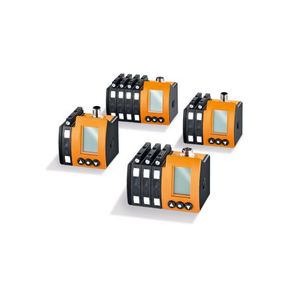- Electricity - Electronics >
- Electronic Component >
- Fiber optic amplifier
Fiber optic amplifiers
{{product.productLabel}} {{product.model}}
{{#if product.featureValues}}{{product.productPrice.formattedPrice}} {{#if product.productPrice.priceType === "PRICE_RANGE" }} - {{product.productPrice.formattedPriceMax}} {{/if}}
{{#each product.specData:i}}
{{name}}: {{value}}
{{#i!=(product.specData.length-1)}}
{{/end}}
{{/each}}
{{{product.idpText}}}
{{product.productLabel}} {{product.model}}
{{#if product.featureValues}}{{product.productPrice.formattedPrice}} {{#if product.productPrice.priceType === "PRICE_RANGE" }} - {{product.productPrice.formattedPriceMax}} {{/if}}
{{#each product.specData:i}}
{{name}}: {{value}}
{{#i!=(product.specData.length-1)}}
{{/end}}
{{/each}}
{{{product.idpText}}}

Voltage: 0 kV - 5 kV
Current: 0 mA - 20 mA
Power: 100 W
... response and the high slew rate required for various loads, such as high capacitive or reactive loads. The amplifier is a non-inverting amplifier. TYPICAL APPLICATION Dielectric elastomer, soft robot, ...

Voltage: 3.3 V
EOA-µ Amplet Booster provides up to 20 dBm of output power in an ultra-compact footprint and can be customized for single channel or multi-channel wideband power amplification. Standard models are available at 15 dBm, 17 dBm, and 19 ...

Power: 500 W
Frequency: 20 Hz - 20,000 Hz

Power: 60 W
ERBIUM-DOPED FIBER AMPLIFIER (EDFA) Neptec’s Erbium-doped fiber amplifier (EDFA) modules are designed for optical network signal amplification and long term reliability. ...

Voltage: 12 V - 36 V
Current: 200 mA
Frequency: 1,500, 800, 1,000, 2,700 Hz
... Precise detection of small parts Available as 2, 4, 6 or 8-channel versions Operation with inexpensive acrylic fibre optics

Voltage: 12 V - 24 V
Current: 60 mA
Lanbao fiber amplifier and optical fibers; Built-in high-speed digital processing chip; Rich functions, easy to set up, and widely used in various applications; NPN and PNP, depends on ...

Power: 3, 17 W
... Optional output power ranges Simplifies engineering requirements for high power amplifier development Typical Applications: CATV amplifiers Fiber lasers LiDAR
Your suggestions for improvement:

A fiber-optic amplifier multiplies photon flow by electronic excitation. The term also refers to a fiber-optic sensor.
ApplicationsThese devices are used to amplify signals in long-distance fiber-optic telecommunications systems. Automatic fiber-optic sensing involves detecting the passage of objects.
TechnologiesIn fiber-optic telecommunications, the signal is boosted at regular intervals. The most common method uses laser pumping to stimulate an erbium-doped fiber amplifier (EDFA). There are other doping systems, as well as a technique using the Raman effect.
Fiber-optic sensing is via interruption or reflection of a laser beam. In general, each unit is equipped with two optical connections and electrical connections for the power supply and for the detection signal. Sensitivity is adjustable, and the unit may be able to self-regulate based on past experience.
A telecommunications apparatus will be chosen as a function of signal frequency range and transmission distance. For sensing equipment, the choice will depend on required functional sophistication and response time.
Receive updates on this section every two weeks.
Please refer to our Privacy Policy for details on how DirectIndustry processes your personal data.
- Brand list
- Manufacturer account
- Buyer account
- Our services
- Newsletter subscription
- About VirtualExpo Group









Please specify:
Help us improve:
remaining